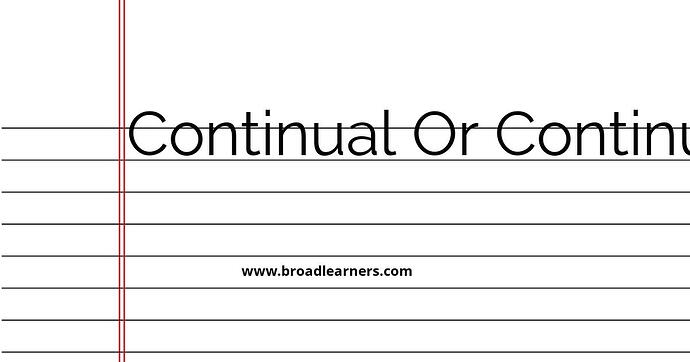'Continual' and 'continuous' are commonly confused words in English grammar. Understanding the difference between 'continual' and 'continuous' is important to use them correctly in written and spoken English.
'Continual' and 'continuous' both refer to something that is happening without stopping or interruption, but there is a subtle difference in their meanings and usage.
| 'Continual' | 'Continuous' |
|---|---|
| The word 'continual' means something that happens repeatedly or frequently, with breaks or interruptions in between. | The word 'continuous' means something that happens without any breaks or interruptions, in a consistent or uninterrupted manner. |
|
|
To remember the difference between 'continual' and 'continuous', it can be helpful to think of 'continual' as something that happens repeatedly but with breaks or interruptions, while 'continuous' refers to something that happens without any breaks or interruptions.
Here are some examples of correct usage:
- The baby's cries were continual throughout the night. (referring to repeated cries with breaks in between)
- The music played continuously for hours. (referring to non-stop music)
- Her husband snored continually, keeping her awake. (referring to repeated snoring with breaks)
- The river flowed continuously, never stopping. (referring to non-stop flow of the river)
Remembering the correct usage of 'continual' and 'continuous' will improve your grammar and communication skills.
